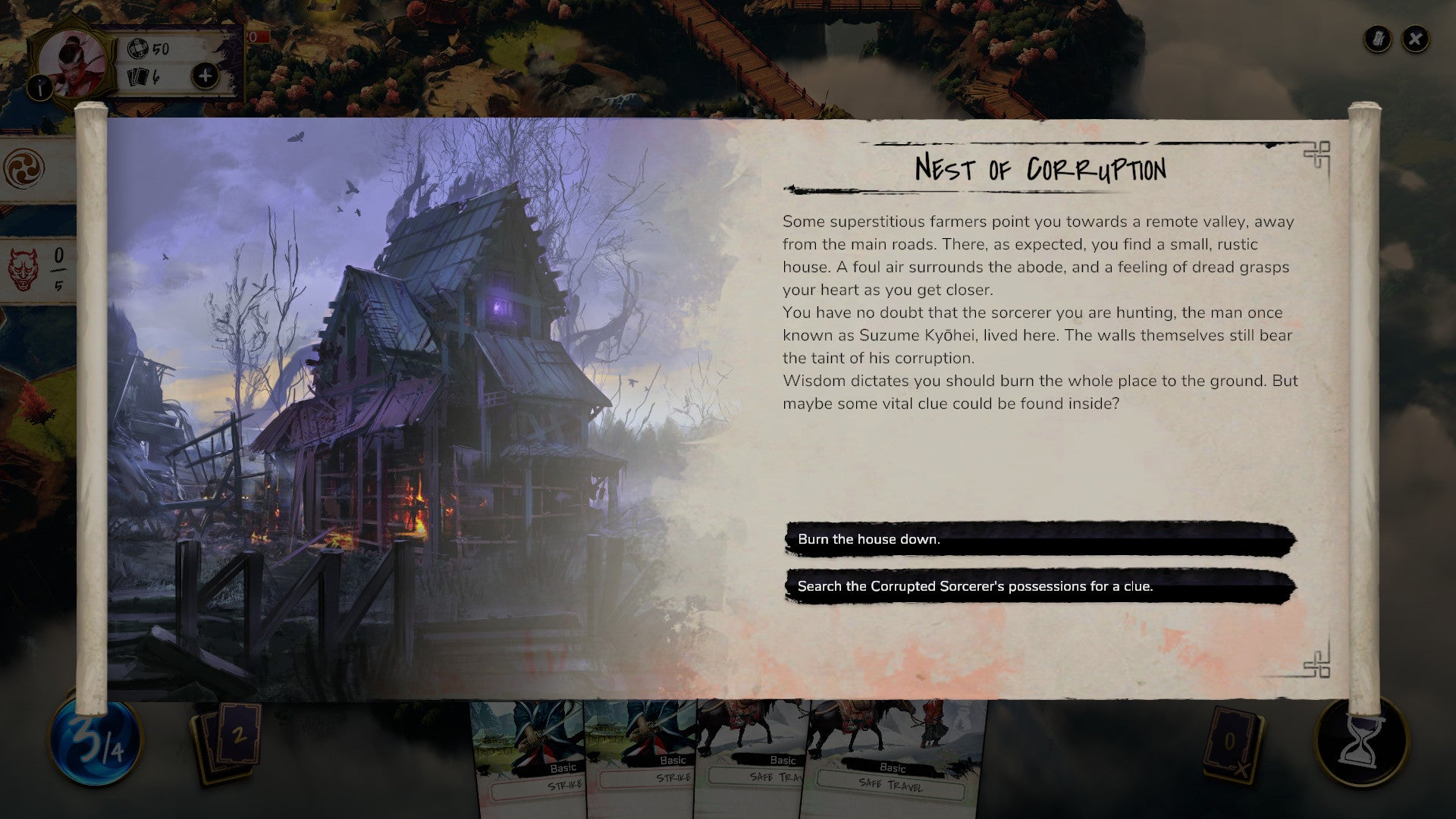Made by the Paris-based Game Source Studio, this turn-based strategy battler sees you take control of four types of samurai as you seek to bring balance to a mystical realm above the clouds. Oni, goblins and other creatures from Japanese myth are your primary antagonists here, but its hexagonal islands are also stuffed full of text-based narrative events, sidequests, and treasure troves to uncover. It’s a lot to take in, but the latter in particular are vital to your success. That’s because every time you start a new mission in Mahokenshi, you’ll be going in with a completely fresh deck - and based on an early preview build I’ve been playing recently, it’s both an ingenious way to keep things feeling fresh, but it can also be a double-edged sword when it comes to trying out new tactics. There is some continuity between missions, I should note. Each samurai has a basic set of starter cards to their name, and completing missions and levelling them up will see that starter deck grow with new additions over time. The bulk of your deckbuilding, however, takes place on the battlefield, either by manoeuvring your warrior onto tiles with clearly marked card caches, or buying them from village merchants using coins plundered from treasure chests. There are also dojos along the way where you can upgrade your cards (for a price), and shrines where you can destroy them if you’re finding all of your good cards are getting lost in the dross. Each card is beautifully illustrated, and the world at large is packed with a similarly gorgeous level of detail. Trees sway in the breeze as birds fly overhead, and waterfalls stream over the side of sheer cliff faces down through the misty clouds onto the mortal realm below. All those mountains and cherry blossom forests aren’t just for show, however. Different types of terrain also affect how much energy you’ll expend travelling through them, and they can also grant different stat buffs to both you and your enemies. You have four energy beads to use per turn in Mahokenshi, which you’ll need to split between traversal and attacks. Grassy plains only need one bead to travel across, for example, but dense forests require two (although they will also grant you four extra defence points at the same time, which can be handy in absorbing pesky goblin arrows and poison darts). Mountains, meanwhile, need three energy beads to cross, but the extra elevation will power up your attacks by three. Utilizing these terrain types can be key to winning large battles, and the gradual process of building up your deck to try and take advantage of them scratches all the right tactics itches you’d expect from a turn-based strategy game. I do have a couple of concerns over the way the preview build was balanced, though. You see, when most enemies cling to the islands’ forests and mountainous borders, taking pot shots at you from afar rather than following you down to the stat-neutral plains, you’ll usually need to bring them fight to them before you’re able to take them down. This can mean that even one-on-one duels can feel like wars of attrition, as you’ll need to hit them with multiple attacks before breaking their terrain-boosted defences. Armour replenishes at the start of each turn, too, dragging out simple encounters into multi-turn affairs that risk hampering the game’s pacing. In fairness, there is a certain tranquillity to be found in Mahokenshi, so perhaps I’m just being a bit too hasty in my goblin bashing. Away from battle, its koto-infused orchestral score brings a very calming presence to the game, and while fast forward options are available, your warrior’s default walking pace is little more than an amble. It speaks to a more considered style of deckbuilder, and with so many points of interest to potentially discover per map, the temptation to take little detours away from your central objective is almost impossible to resist. However, there are also times when its mission design butts heads with this philosophy. In your second main story mission, for example, you’re tasked with racing across the map to stop an enormous flaming ogre from destroying a castle. It’s the kind of objective that would normally inject a welcome sense of urgency into a turn-based strategy game, but when your path is littered with demons chucking poison knives at you (each of which takes multiple precious turns to defeat), getting there in time - and in one piece - can be exceedingly tricky. Remember, you’ve also got to balance things like seeking new cards and actually building up a reasonable deck to take them on with. Thankfully, defeat doesn’t just plonk you back at the start with nothing to show for it. You’ll still net a wodge of those all-important experience points to help strengthen your warrior and level them up, but knowing you’ve effectively got to start from scratch each time can also dampen your spirit somewhat. Got a particularly good card or upgrade during that last attempt? Well, you can wave that goodbye on round two (and round three, and four, and five), and say hello instead to your basic strike cards again. Your mileage with this may vary, of course, but for me, I found it led to a lot of repetitive busy work as I went about building up my deck again - especially when single missions can take anywhere between 20-30 minutes to complete. And yet, there’s something about Mahokenshi that continues to intrigue me. I’m a sucker for Japanese mythology stories, and the allure of its floating archipelago has me piqued. There’s a kernel of something special here, and perhaps I just need to switch up my strategy a bit in order to unleash its full potential. I will continue plugging away at it over the next couple of months, so expect more thoughts in the new year when it releases on January 24th on Steam.



